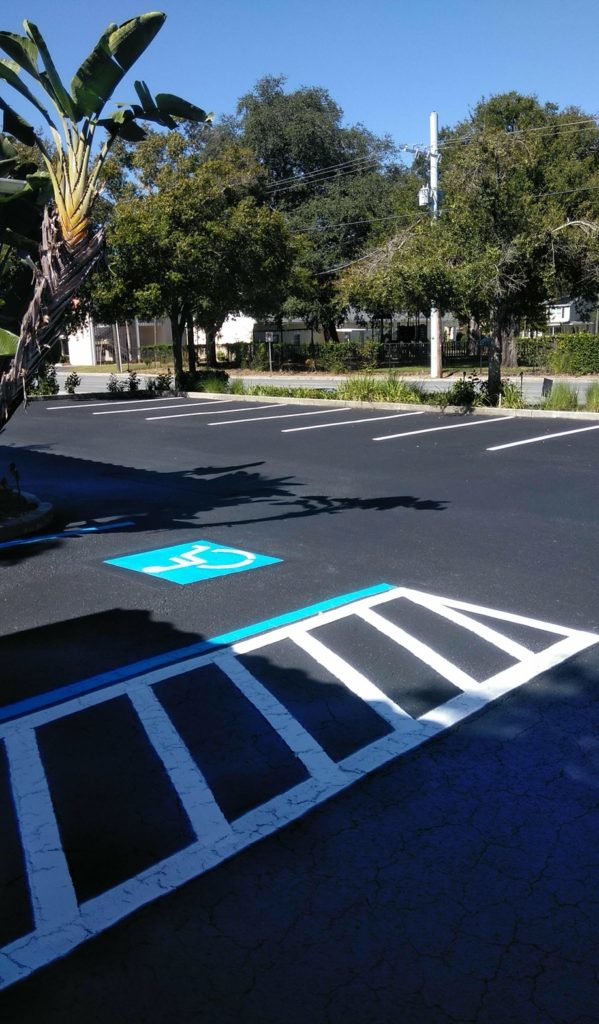Optimize Resilience: Warm Mix Asphalt Sealing for Angled Parking Frameworks
Optimize Resilience: Warm Mix Asphalt Sealing for Angled Parking Frameworks
Blog Article
Hot Mix Asphalt: A Lasting Solution for Pavement
Warm Mix Asphalt (HMA) has emerged as a leading sustainable option for pavement services, offering a myriad of ingenious innovations and ecological advantages. As the demand for environmentally friendly building methods expands, exploring the subtleties of HMA's sustainability can supply valuable insights right into the future of sidewalk services.
Ecological Benefits of Warm Mix Asphalt

Furthermore, Hot Mix Asphalt helps to minimize urban warm island impacts. Its dark color takes in sunlight, minimizing the quantity of warmth showed back into the ambience contrasted to lighter-colored pavements. This can lower ambient temperature levels in metropolitan areas, lowering the need for a/c and eventually minimizing energy consumption.
Furthermore, Warm Mix Asphalt adds to boosted stormwater administration. Its permeable nature allows water to reenergize and infiltrate the pavement groundwater supplies, reducing overflow and the threat of flooding. These ecological advantages make Warm Mix Asphalt a lasting choice for paving roadways and highways.
Energy Effectiveness in HMA Manufacturing
Is power performance a critical factor in the production of Hot Mix Asphalt (HMA)? Absolutely. Power plays a significant function in the production of HMA, impacting both expense and ecological sustainability. One essential aspect of power efficiency in HMA production is the use of cozy mix asphalt (WMA) modern technologies (angled parking). WMA permits for the blending and placement of asphalt at reduced temperatures contrasted to conventional hot mix asphalt, leading to lowered power intake throughout manufacturing. This procedure not only lowers gas usage however also lowers greenhouse gas emissions, making it a more eco-friendly choice.
Furthermore, developments in plant modern technologies have brought about even more energy-efficient HMA production procedures. Modern plants are developed with functions like recycled asphalt sidewalk (RAP) processing abilities, effective heater systems, and boosted insulation, all adding to energy savings. By optimizing power use in HMA manufacturing, the market can minimize its carbon impact while preserving high-quality pavement materials. Energy performance is, for that reason, a crucial consideration in guaranteeing the sustainability of Hot Mix Asphalt production.
Recyclability of Hot Mix Asphalt
The recyclability of Hot Mix Asphalt (HMA) is a crucial facet of its sustainability and long-lasting ecological effect. HMA is among the most recycled products in the USA, with over 100 million lots of reclaimed asphalt pavement (RAP) being reused each year in new sidewalk building and construction. Reusing HMA provides a number of ecological benefits, such as reducing the demand for virgin products, reducing power usage throughout production, and lowering the quantity of waste sent out to landfills.
The process of reusing HMA includes milling the existing pavement, crushing it right into smaller pieces, and blending it with brand-new accumulation and asphalt binder to produce a recycled mix. In general, the recyclability of HMA plays a significant function in promoting sustainable techniques within the sidewalk market.

Long-Term Efficiency of HMA
Asphalt pavements show resilience and resilience over an extensive duration, reflecting the lasting efficiency of Warm Mix Asphalt (HMA) Additionally, improvements in HMA modern technology, such as the usage of polymer-modified binders and warm mix asphalt, have further improved the longevity and long life of HMA pavements. By focusing on quality building and maintenance methods, HMA continues to show itself as a lasting and cost-effective remedy for long-lasting pavement infrastructure.

HMA: Sturdiness and Sustainability
Demonstrating both longevity and sustainability, Hot Mix Asphalt (HMA) has come to be a keystone in the building of durable sidewalk frameworks - commercial parking lot paving. HMA's longevity comes from its capability to withstand heavy lots, rough climate condition, and high web traffic volumes, making it a reputable selection for roadways, freeways, and airport terminal runways. The composition of HMA, which typically includes accumulations, binder, and filler, plays an essential duty in boosting its long life and resistance to deterioration
In addition, HMA's sustainability depends on its recyclability and energy-efficient manufacturing procedure. The capacity to recycle recovered asphalt pavement (RAP) in brand-new HMA combinations reduces the need for virgin materials and lessens the ecological effect of pavement building and construction and upkeep. Additionally, the power effectiveness of producing HMA hinges on its reduced mixing temperature levels contrasted to other pavement materials, resulting in reduced energy usage and greenhouse gas exhausts.
Conclusion
To conclude, hot mix asphalt (HMA) uses a sustainable service for pavement with its eco-friendly qualities. HMA's recyclability, energy effectiveness in production, and long-lasting sturdiness make it an environmentally friendly choice for roadway building and over at this website construction. By saving all-natural sources, minimizing waste, and lowering greenhouse gas exhausts, HMA plays a critical duty in advertising sustainability in framework growth. Its capacity to alleviate metropolitan warmth island results even more underscores its relevance in developing durable and eco mindful sidewalk systems.
HMA is one of the most recycled materials in the United States, with over 100 million lots of reclaimed asphalt pavement (RAP) being recycled each year in brand-new sidewalk construction.The process of reusing HMA entails milling the existing sidewalk, squashing it right into smaller sized items, and mixing it with new aggregate and asphalt binder to create a recycled mix.Asphalt pavements show durability and strength over a prolonged period, here reflecting the long-lasting efficiency of Warm Mix Asphalt (HMA) Additionally, innovations in HMA innovation, such as the usage of polymer-modified binders and click here now cozy mix asphalt, have actually additionally improved the sturdiness and longevity of HMA sidewalks. The capacity to reuse reclaimed asphalt sidewalk (RAP) in brand-new HMA combinations minimizes the demand for virgin materials and decreases the environmental influence of sidewalk building and maintenance.
Report this page